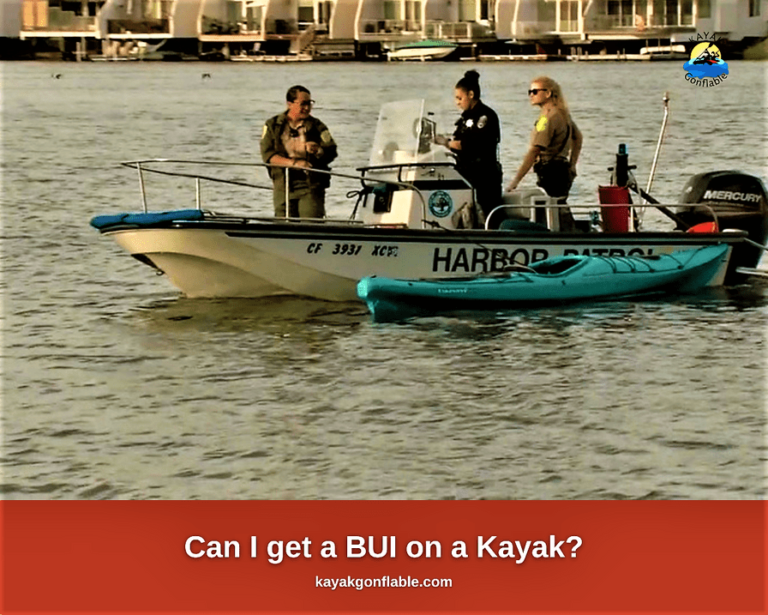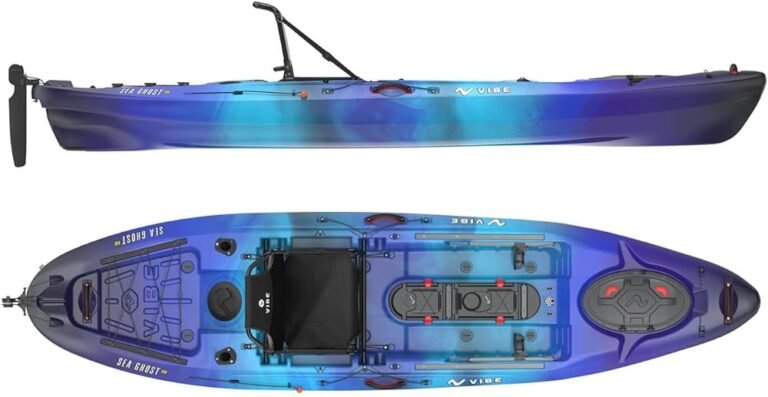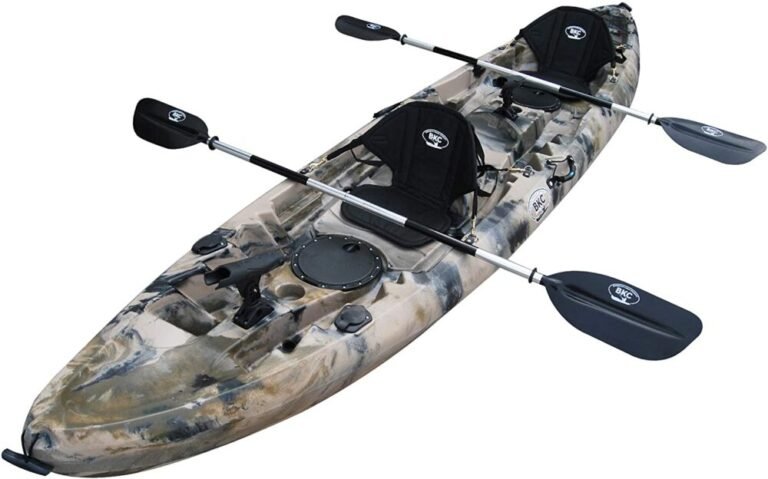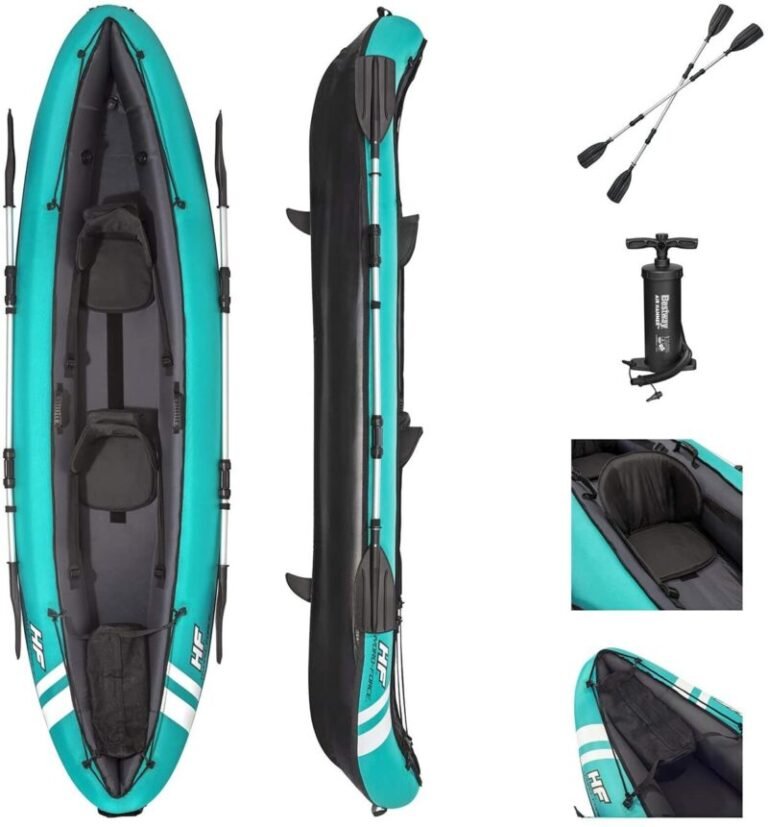Is Kayaking Dangerous?
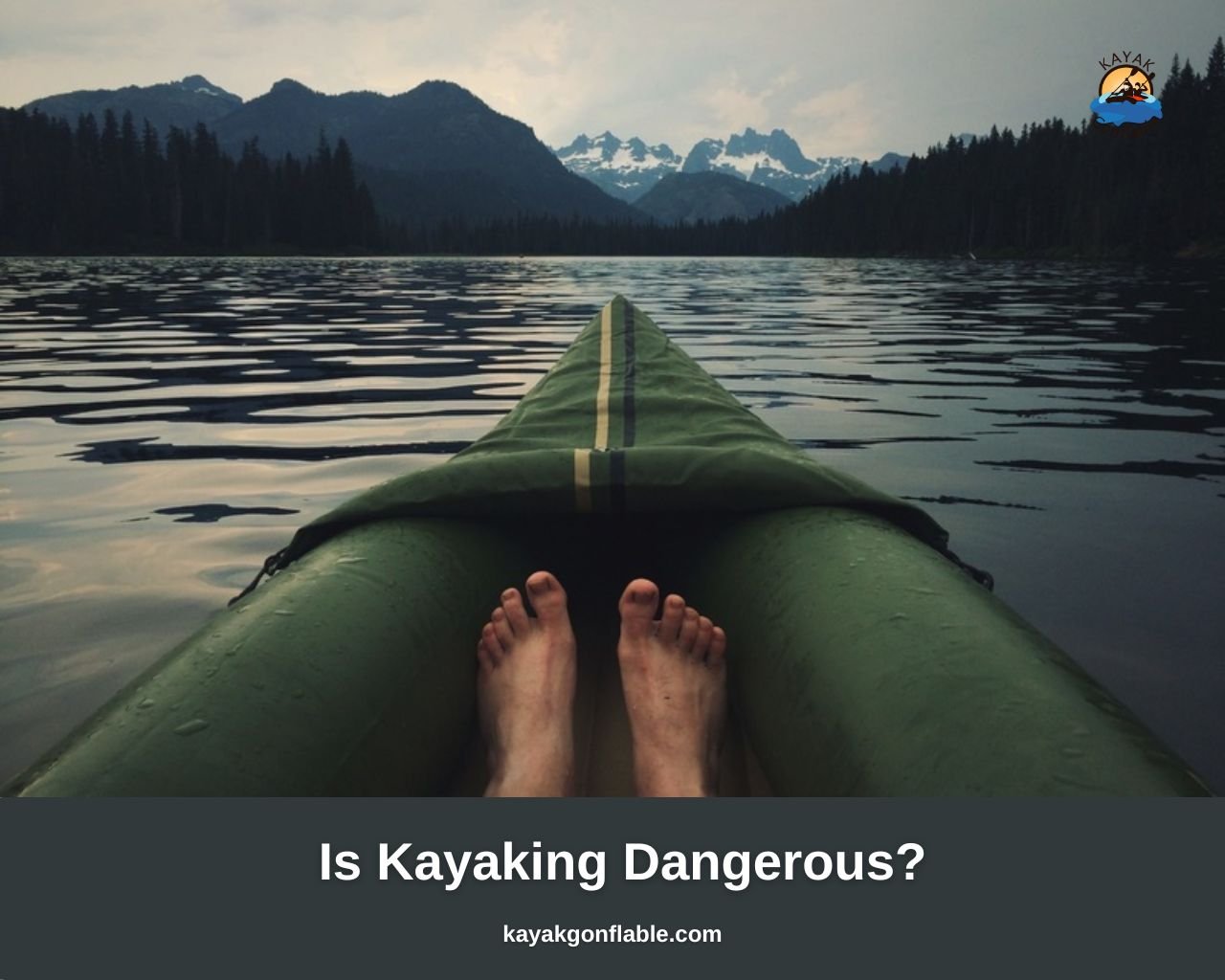
Kayaking is a safe way to explore the outdoors and get some exercise. It can be a relaxing or challenging experience, depending on the route you choose and it can be enjoyed by people of all ages.
However, kayakers need to be aware of their surroundings and take precautions to avoid accidents. Before going out on the water, it’s important to learn the basics of kayaking and have the proper gear.
Kayaking can be enjoyed by people of all ages. Kayaks are small, lightweight boats that are propelled by using a double-bladed paddle.
Kayaking can be done in many different settings, including rivers, lakes, and the ocean. It is a great way to get exercise and see beautiful scenery and can be enjoyed by people of all ages.
Kayaking is also a very versatile activity, as it can be done in many different types of weather and on many different types of water. Kayaking is relatively easy to learn, and there are many different types of kayaks to choose from.
Each type of kayak is designed for a specific purpose. Kayaks can be made from a variety of materials, including fiberglass, plastic, and wood. The type of kayak you choose should be based on your intended use.
Some kayaks are made for leisurely activities such as fishing or cruising, while others are made for more adventurous activities such as whitewater kayaking.
There are even specialized kayaks designed for specific purposes like racing or camping. Racing kayaks are usually sleek and lightweight so that they can move quickly through the water.
They often have a pointed nose to help them cut through the waves. Fishing kayaks are wider and more stable so that you can sit or stand while you fish.
They also have storage compartments for your gear. Camping kayaks are the largest and most sturdy so you can bring all your camping gear with you on your trip.
The most common type of kayak is the recreational kayak. These kayaks are usually between 8 and 12 feet long and have a variety of features that make them ideal for casual use.
They often have comfortable seats and plenty of storage space for gear and supplies. Whitewater kayaks are much shorter than recreational kayaks, typically around 7 feet long.
They also have a variety of special features that make them better suited for rougher waters. They often have raised seats to give the paddler more stability and control in rough conditions.
When you use the wrong type of kayak for the wrong purpose, you can end up in serious trouble. Kayaks are designed for specific activities and environments, and using the wrong kayak for the wrong activity can be dangerous.
For example, using a whitewater kayak on flat water can be incredibly difficult and frustrating. Whitewater kayaks are designed to move quickly through rapids and rough water, and they aren’t built for comfort or speed on calm waters.
Similarly, using a flat-water kayak in whitewater can be extremely dangerous. Flat-water kayaks aren’t designed to withstand the force of rapids or waves, and they can easily capsize or fill with water.
Kayaking Techniques
Kayaking can be dangerous for novices if there is no guide around. Without someone to help, novices can easily make mistakes that could lead to an accident.
Even something as simple as not knowing how to get in and out of the kayak can be dangerous. That’s why it’s always best to have a guide with you when you’re first starting out.
Kayaking is a fun and relatively easy way to enjoy the outdoors, but it takes a little bit of practice to perfect your kayaking technique to avoid injuries and accidents
If you are not experienced, it is easy to make mistakes that can put you in danger. Always be sure to check your surroundings and never go kayaking alone.
Before setting out to kayak, it is important to choose the right kayak for the desired purpose. For example, a touring kayak is going to be very different than a whitewater kayak.
It is also important to learn proper paddling techniques as there are different strokes used for different situations. Knowing when to use each stroke is crucial for an enjoyable and safe experience while kayaking. Here are some tips you should know for a safe kayak:
Getting in and out of a kayak: when getting into a kayak, first sit on the edge of the kayak with your feet in the water. Then, swing your legs into the cockpit and lower yourself down into the seat.
It’s important to keep your center of gravity low so you don’t tip over. To get out of a kayak, first, lift yourself up out of the seat and then swing your legs out of the cockpit.
You may need to hold onto the side of the kayak for stability. Once you’re out, be careful not to tip over as you get back onto shore.
Kayak Paddling Techniques
Kayak paddling techniques are very important for anyone who wants to paddle their kayak without injuries.
There are many different techniques that you can use, but the most important thing is to make sure that you are using the correct technique for your particular kayak. Here are some kayak paddling tips to help you get started:
- The first thing you need to do is to choose the right paddle for your kayak. There are many different types of paddles available, so it is important to select one that is comfortable for you to use.
- Once you have selected a paddle, it is time to practice your strokes. Start by lying on your stomach in the kayak and practice paddling with both arms.
- Sit up straight and tall in your seat. This will help you generate more power with each stroke and also helps to keep your back and shoulders in alignment
- Make sure your feet are positioned correctly in the foot wells. This will give you more leverage and allow you to transfer more power from your legs to your arms.
- As you become more comfortable with your strokes, you can start to experiment with different techniques. If you don’t know the proper techniques, you can end up with some serious injuries. Here are some kayak paddling techniques that will help you stay safe and avoid injuries.
One of the most important things to remember when paddling your kayak is to maintain a power position. This means keeping your hips and shoulders square to the boat and keeping your back straight.
This will help you generate more power and avoid putting too much strain on your back. Another important technique to remember is to use your whole body when paddling.
Many people only use their arms, but this can lead to fatigue and even injuries. Instead, engage your core muscles and legs in torso rotation to help power your strokes. This will help you paddle longer and with more efficiency.
Danger Of Wrong Kayaking Techniques
Kayaking can be a dangerous sport if the proper techniques are not used. Every year there are reports of people dying while kayaking due to capsizing, getting stuck in a current, or being hit by a boat.
Kayakers can also easily become fatigued or injured if they don’t use the proper paddling technique.
While most of these accidents can be prevented with the proper training and safety precautions, it is still important to be aware of the dangers associated with kayaking.
Kayaking injuries include blisters, shoulder pain, wrist pain, back pain, tendonitis, and shoulder dislocation. A shoulder dislocation is a serious injury that can occur from incorrect kayaking techniques.
The shoulder is one of the most vulnerable joints in the body and when it’s dislocated, the arm is no longer properly connected to the rest of the body. This can cause immense pain and may even require surgery to fix.
There are several kayaking techniques that can lead to a shoulder dislocation, but some of the most common include incorrect paddling form and not using proper safety equipment.
It’s important to be aware of these potential hazards so you can avoid them while out on the water. Shoulder pain is often caused by incorrect paddling techniques.
When paddling, your arms should be in line with your shoulders and you should keep your elbows close to your body. Wrist pain can also be caused by incorrect paddling techniques.
When you grip the paddle, make sure that your wrist is in a neutral position and that you’re not hyper-extending your elbow. Back pain is often caused by sitting in the wrong position.
Make sure that you’re sitting up straight and that your knees are bent at a 90-degree angle. Some accidents could also occur. They include:
Drowning is the most common danger of kayaking. It can happen quickly and without warning, and it can be difficult to get out of the water if you’re not wearing a life jacket. Here are some tips to help you stay safe while kayaking:
Wear a life jacket at all times. It is extremely important to wear a life jacket at all times while near or in bodies of water. If you were to become unconscious for any reason, it would be impossible to swim and you would quickly drown.
Life jackets are relatively inexpensive and can literally save your life, so there is no excuse not to wear one. Be aware of your surroundings. If you see something that looks like it could be dangerous, paddle away from it.
It is important to be aware of your surroundings and paddle away from anything that looks dangerous. This will help you avoid any potential hazards and have a more enjoyable experience.
Once again don’t paddle alone. It’s always safer to paddle with someone else in case one of you gets into trouble. in case one of you gets into trouble.
That way, if something happens, there’s someone there to help. Plus, it’s just more fun to paddle with a friend. If you do find yourself in the water, try to stay calm and float on your back until someone can come and help you.
Capsizing: When Your Kayak Flips Over
A kayak capsize can be a dangerous situation if you are not prepared. There are a few things you can do to escape from a capsized kayak.
- First, try to stay calm. It can be difficult to think clearly when you are upside down in the water, but it is important to remember that panicking will only make the situation worse. Try to focus on what you need to do to get yourself out of the water. If you can stay calm and think clearly, you will be much more likely to succeed.
- Next, assess the situation and determine whether you are trapped under the kayak or if you are able to swim out from under it. If you are trapped, use your hands to feel around for an edge or a hole that you can pull yourself through.
- Finally, once you have escaped from the kayak, swim to shore as quickly as possible. This will help you get out of the water and avoid any potential dangers. If you can, try to find a safe place to rest and recover before continuing on your journey.
Kayaking: The Risk Of Hypothermia
One of the risks that comes with kayaking is hypothermia. Hypothermia can occur when you are kayaking in water that is colder than your body temperature.
It can also occur when you are kayaking in air that is colder than your body temperature. Symptoms of hypothermia include shivering, confusion, and exhaustion.
If you start to experience these symptoms, it is important to get out of the water and into a warm environment as soon as possible. There are steps you can take to prevent hypothermia, such as wearing proper clothing and using a wetsuit.
By taking these precautions, you can help ensure that your next kayaking trip is safe and enjoyable.
How To Kayak Safely Through Rough Waters
Kayaking through rough waters can be dangerous if the proper safety precautions are not taken.
This article will provide tips on how to kayak safely through rough waters. By following these tips, you can minimize the risks associated with kayaking and have a more enjoyable experience.
If you’re an experienced kayaker, you know that one of the best parts of the sport is paddling through rough waters. But even if you’re a beginner, there are ways to safely enjoy this type of kayaking. Here are some tips:
- First, make sure you have the proper equipment. A good kayak and life jacket are essential. If you don’t have your own, you can usually rent them from a local shop. Make sure to get a kayak that is the right size for you, or you will be uncomfortable the whole time.
- Second, always paddle with a partner. This will help you stay safe and have someone to rely on if something goes wrong. Paddling with a partner also allows you to cover more ground and explore more of the river or lake.
Collisions And Entrapment: Risks In Whitewater
Collisions and entrapment are the two main risks in whitewater kayaking. Collisions can occur when two kayaks collide or when a kayak collides with an object in the water.
Entrapment can occur when a kayak becomes wedged between two objects or when a kayak is overturned and the paddler becomes trapped underwater.
Both of these risks can be minimized by following some simple safety guidelines.
- First, always wear a life jacket while kayaking.
- Second, avoid paddling in areas with large amounts of debris or other boats.
- Third, be aware of your surroundings and avoid paddling near cliffs or other hazards.
- Fourth, If you do capsize, stay with your kayak and try to right it as quickly as possible.
- Fifth, If you become trapped underwater, try to push yourself up and out of the kayak.
Safety Gear For Kayakers
Kayaking is a great way to enjoy the outdoors, but it’s important to be safe while doing it. Wearing the proper safety gear is essential for any kayaker, beginner or experienced.
Most kayakers know that wearing a personal flotation device, or PFD, is non-negotiable. But there’s other safety gear worth considering, too.
A helmet is an important piece of gear for any kayaker, whether a recreational kayak, whitewater kayak, or camping kayak.
A helmet can protect you from hitting your head on rocks or low-hanging branches, and can also help keep you warm in cold weather.
Helmets are required gear for many paddling events, so it’s important to have one that fits well and is comfortable to wear.
If you’ll be kayaking in cold water, it’s a good idea to wear a wetsuit or dry suit. Not only will they keep you warm, but they’ll also provide some extra buoyancy in case you capsize.
Wetsuits are made of neoprene, which is a synthetic rubber that’s waterproof and insulated. Drysuits, on the other hand, are made of waterproof and breathable fabrics like Gore-Tex.
And finally, don’t forget to bring a whistle or other signaling device. If you find yourself in trouble, it could mean the difference between being found and being lost.
A signaling device can be an important piece of safety equipment, and it’s always better to be safe than sorry. So make sure to pack one before heading out on your next adventure.
By taking some simple precautions and wearing the proper safety gear, kayakers can stay safe and enjoy their time on the water.
Where To Safely Kayak
There are many wonderful kayaking locations all across the United States. Here are three safe waterbodies to kayak:
- Lakes – Lakes are typically calm and free of obstacles, making them ideal for kayaking. Be sure to check the weather forecast before heading out, as wind can create waves that make kayaking more difficult.
- River sections with little or no current – If you’re new to kayaking, it’s best to avoid sections of river with strong currents. Look for stretches of river that are relatively calm and have few obstacles.
- Coastal areas – Coastal areas offer beautiful scenery and challenging conditions depending on the tide and waves. Again, be sure to check the forecast before heading out, as conditions can change quickly in coastal areas.
No matter what state you live in, there is sure to be a safe place to go kayaking nearby. Here are just a few of the many great kayaking spots in the country.
One of the best kayaking spots in the country is the Snake River in Wyoming. This river runs through some of the most beautiful scenery in the country and is perfect for an adventurous day trip.
The Florida Keys also offer some of the best kayaking in the country, with crystal-clear waters and plenty of opportunities to see wildlife.
The Everglades National Park is another great place to explore by kayak, where you can paddle through mangrove forests and spot alligators and turtles.
If you’re looking for a more relaxing kayaking experience, try paddling around Lake Tahoe in California. This stunning lake is surrounded by towering mountains and is a popular spot for swimming, sunbathing, and fishing as well as kayaking.
If you’re looking for a more challenging kayaking experience, California’s Sierra Nevada mountains offer beautiful scenery and whitewater rapids.
For a truly unique paddling adventure, head to Alaska and explore the glaciers and fjords by kayak. In conclusion, is kayaking dangerous?
While there are some risks associated with the sport, overall it is safe when practiced with proper safety measures in place. Wearing a life jacket and using a helmet can help protect against serious injury in the event of a fall.
Kayakers should also be aware of their surroundings and use common sense when paddling to avoid accidents. By following these simple safety tips, kayakers can enjoy the sport without worry.

